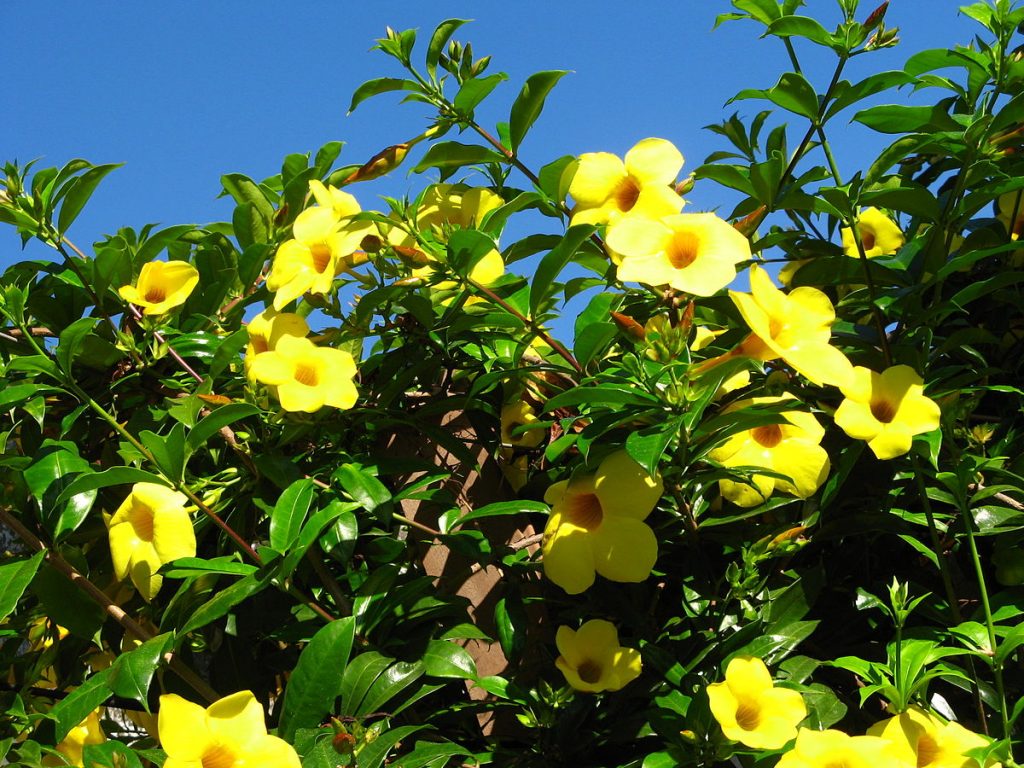
Golden trumpet is a tropical evergreen vine native to Brazil where it grows over other plants in mangrove swamps and other wet areas. They can be grown outside in warm areas of the US but have to brought inside for the winter in cool cliamtes. It is in the dogbane family (Apocynaceae) together with periwinkle (Vinca), oleander (Nerium), and bluestar (Amsonia). The plants are vigorous and grow up to twenty feel long bearing shiny light green leathery leaves up to six inches long and with deep veins and wavy margins. The golden-yellow flowers sometimes have white markings in the throat, are three to four inches long, and and are trumpet shaped. They are produced in clusters during summer and fall when temperatures are above 70 C. The prickly seed pods produce winged seeds. Golden trumpet has no means of climbing and needs to be tied to supports, allowed to ramble, or trimmed into a shrub. Plants can be used as a ground cover or a hedge. An infusion of the leaves has been used as a cathartic. All parts of plant can cause stomach problems if ingested in quantity and the milky stem sap may cause severe skin irritation. The genus name, Allamanda, honors Swiss-Dutch natural historian Jean-Nicolas-Sébastien Allamand. The specific epithet, cathartica, is from the Greek word καθαρτικός (kathartikós), meaning fit for cleansing, and refers to it effect when ingested.
Type: Tropical evergreen vine
Bloom: Golden-yellow, trumpet-shaped flowers sometimes with white throat markings, three to four inches long, in summer and fall
Size: Up to 20′ long
Light: Full sun
Soil: Fertile, moist, well-drained
Care: Prune to maintain size; train to climb
Hardiness: Zones 9-11
Pests and Diseases: Susceptible to mealy bug, spider mites, scale, leaf spot
Propagation: Hard of softwood cuttings in warm weather
Outstanding Selections:
‘Brown Bud’ (Brown buds; 8-10 feet long)
‘Peaches a Cream’ (Cream flowers with hints of peach)
‘Cherries Jubilee’ (hybrid with A. blanchetii; grows 6-8′ long, rosy purple flowers with black center, 3-4″ wide)
‘Compacta’ (Hybrid with A. schotii; 2′ long)
Photo Credit: mauroguanandi Wikimedia Commons